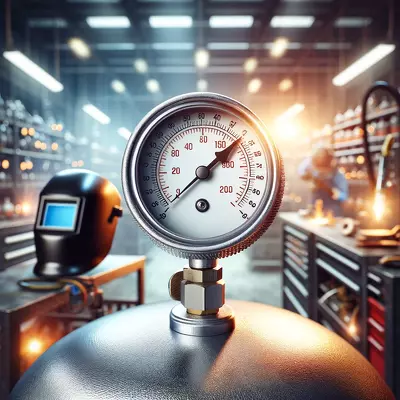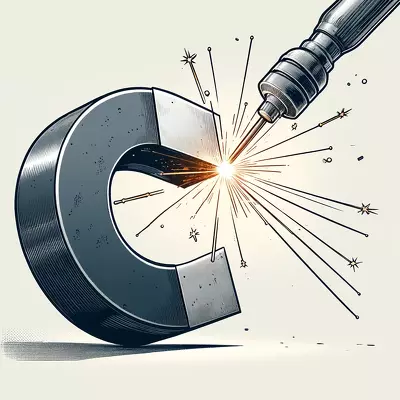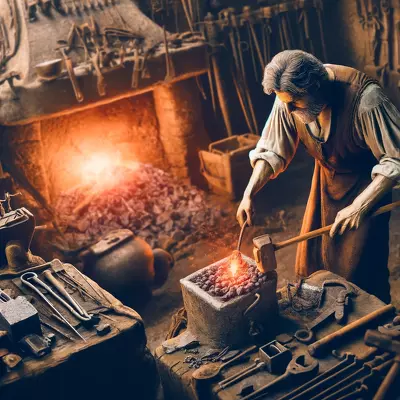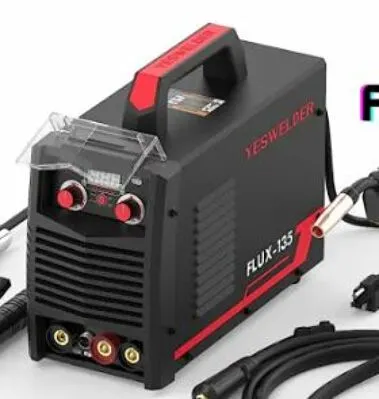The Hidden Variable: Deciphering Gas Pressure in MIG Welding Techniques

The gas pressure for MIG welding plays a crucial role in protecting the weld pool from atmospheric contamination, ensuring a high-quality weld. It is determined by various factors, including the type of material being welded, the welding position, and the gas flow rate. Understanding the optimal gas pressure settings is essential for achieving strong and clean welds, making it a fundamental aspect of MIG welding processes.
I. Introduction to Gas Pressure in MIG Welding
A. Importance of Gas Pressure
In the realm of metal inert gas (MIG) welding, the gas pressure exerts a significant impact on the overall quality and integrity of the weld. This crucial parameter helps to shield the weld pool from the adverse effects of atmospheric gases, such as oxygen and nitrogen, which can lead to weld defects like porosity and oxidation. By maintaining optimal gas pressure, welders can ensure a stable arc and a clean, strong weld.
B. Overview of the MIG Welding Process
MIG welding, a popular method for joining metals, employs a consumable wire electrode and a shielding gas that flows through the welding gun. This process is renowned for its efficiency and versatility in welding various types of metals. The choice of gas and its pressure settings are tailored to the specific welding application, highlighting the importance of understanding how to determine and adjust gas pressure for MIG welding.
II. Determining the Right Gas Pressure for MIG Welding
A. Factors Influencing Gas Pressure
- Material Type
The nature of the material being welded plays a pivotal role in deciding the appropriate gas pressure. Different materials react uniquely to the welding process, requiring adjustments to gas flow rates to achieve optimal results. - Welding Position
Welding positions, ranging from flat to overhead, necessitate modifications in gas pressure settings to maintain effective shielding and control the weld pool’s behavior. - Type of Gas Used
The selection of shielding gas—argon, carbon dioxide, helium, or their mixtures—directly influences the required gas pressure. Each gas has distinct properties affecting the arc, penetration, and overall weld quality.
B. Recommended Gas Pressure Ranges
- Thin Materials
Welding thinner materials demands lower gas pressures to prevent excessive spatter and distortion due to the heat input. - Thick Materials
Conversely, thicker materials often require higher gas pressures to ensure deep penetration and adequate shielding across the wider weld pool.
C. Adjusting Gas Pressure
- For Different Environmental Conditions
Outdoor welding or areas with drafts necessitate adjustments in gas pressure to compensate for gas dispersion and maintain effective shielding. - For Various Welding Techniques
Different MIG welding techniques, such as short circuit or spray transfer, require specific gas pressures for optimal performance and results.
III. The Role of Gas Pressure in Weld Quality
A. Protection Against Contamination
Maintaining the correct gas pressure is vital for preventing atmospheric contamination of the weld pool, which can significantly degrade weld quality.
B. Influence on Weld Penetration and Bead Shape
Gas pressure settings affect weld penetration depth and bead shape, influencing the strength and appearance of the weld.
C. Effects on Spatter and Porosity
Appropriate gas pressure minimizes spatter and reduces the risk of porosity, ensuring a cleaner and more reliable weld.
IV. Common Gases Used in MIG Welding and Their Pressure Settings
A. Argon and Its Mixtures
Argon is often mixed with other gases to enhance weld quality and characteristics. Its typical pressure settings vary depending on the mixture and application.
B. Carbon Dioxide
Carbon dioxide, used either pure or in mixtures, is known for deep penetration capabilities. Its pressure settings are adjusted based on the desired weld properties.
C. Helium Mixtures
Helium is added to increase weld pool fluidity and improve penetration. The gas pressure for helium mixtures is carefully regulated to balance these benefits with cost considerations.
V. FAQs
Q: What is the ideal gas pressure for MIG welding?
A: The ideal gas pressure varies depending on material thickness, welding position, and gas type, typically ranging from 15 to 25 cubic feet per hour (CFH).
Q: How do I adjust gas pressure for outdoor welding?
A: Increase the gas flow rate to compensate for wind and ensure the weld pool remains shielded.
Q: Can incorrect gas pressure cause welding defects?
A: Yes, incorrect gas pressure can lead to porosity, excessive spatter, and other weld defects.
Q: Does the gas pressure differ for welding thin materials?
A: Yes, lower gas pressures are recommended for thin materials to prevent burn-through and distortion.
Q: What role does gas pressure play in weld quality?
A: Proper gas pressure ensures effective shielding from atmospheric contamination, influencing weld penetration, bead shape, and cleanliness.
Q: How does the type of gas affect the required pressure?
A: Different gases have unique properties that necessitate specific pressure settings for optimal welding results.
Q: Are there different gas pressures for different welding techniques?
A: Yes, various MIG welding techniques require adjustments in gas pressure to suit their specific characteristics and applications.
VI. Conclusion
A. Recap of Key Points
The article explored the critical role of gas pressure in MIG welding, emphasizing its impact on weld quality and the necessity of adjusting pressure based on material type, welding position, and gas used. Proper gas pressure settings are paramount for achieving a clean, strong weld free from defects.
B. Importance of Precise Gas Pressure Adjustment
Precise adjustment of gas pressure is fundamental in MIG welding, ensuring the shielding gas effectively protects the weld pool and supports optimal welding conditions. This adjustment enhances the overall integrity and appearance of the weld, making it an essential skill for welders.
VII. Suggested Readings
Understanding the intricacies of gas pressure in MIG welding is vital for anyone involved in welding operations. The following books offer further insights into MIG welding techniques, including gas pressure considerations:
- “Welding: Principles and Applications” by Larry Jeffus: This comprehensive guide covers a wide range of welding techniques, including detailed discussions on gas selection and pressure settings.
- “MIG Welding Guide” by K. Weman: Focused specifically on MIG welding, this book offers practical advice on equipment, materials, and techniques, with a focus on optimizing gas pressure.
- “The Procedure Handbook of Arc Welding” by The Lincoln Electric Company is an industry standard that provides detailed guidance on all aspects of arc welding, including MIG welding gas pressures.
These resources serve as an invaluable foundation for both novice and experienced welders. They offer detailed explanations and practical tips for mastering MIG welding, with a particular emphasis on the critical role of gas pressure.






